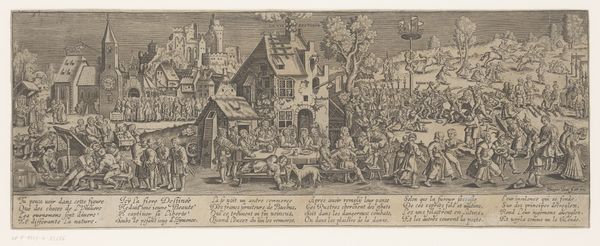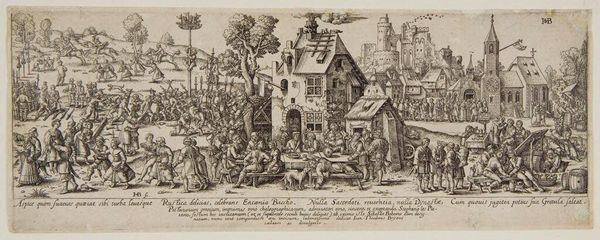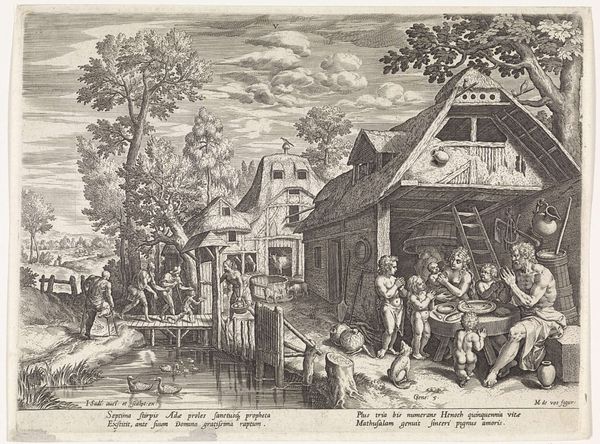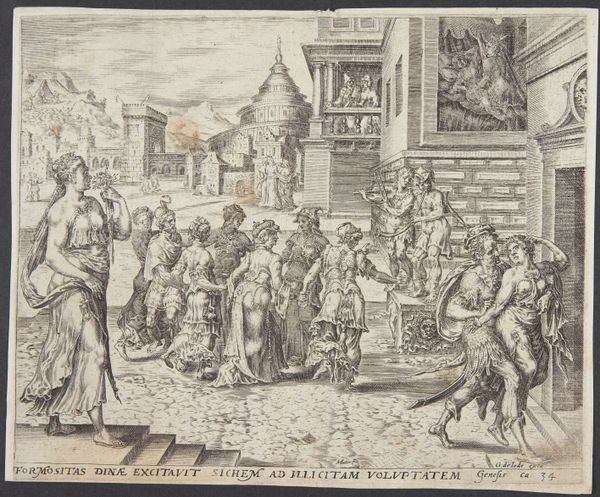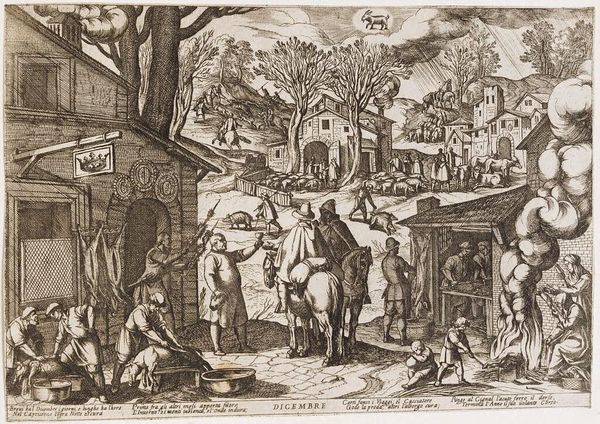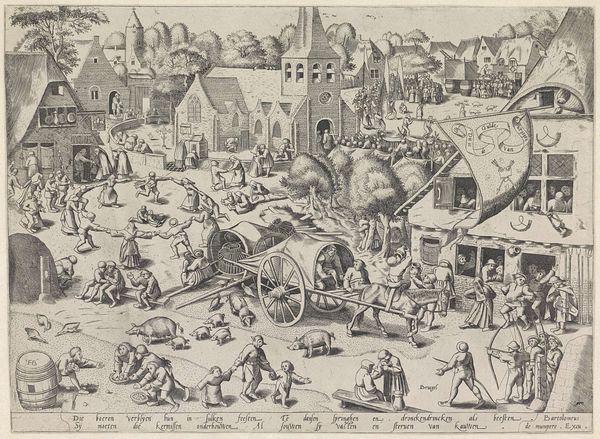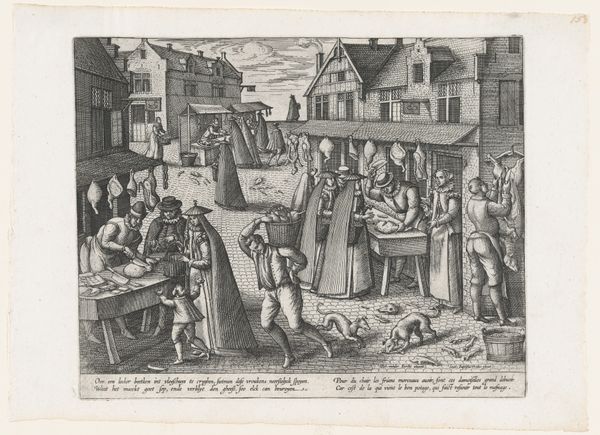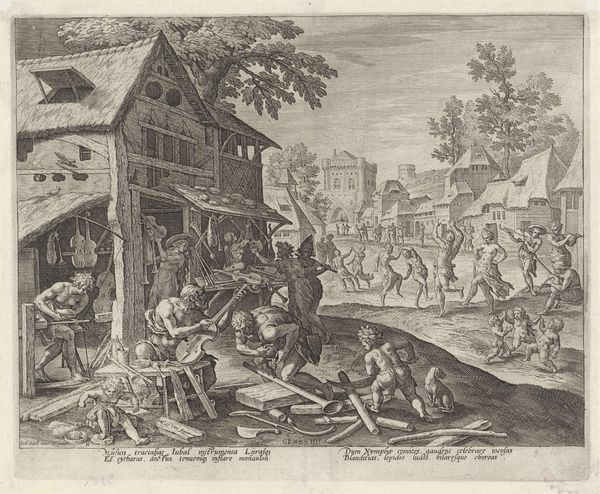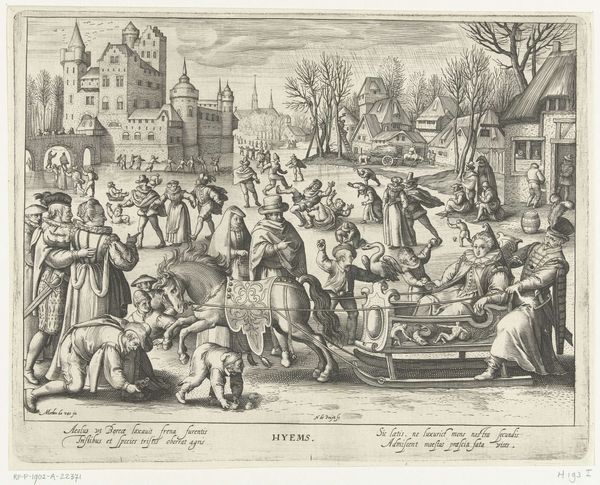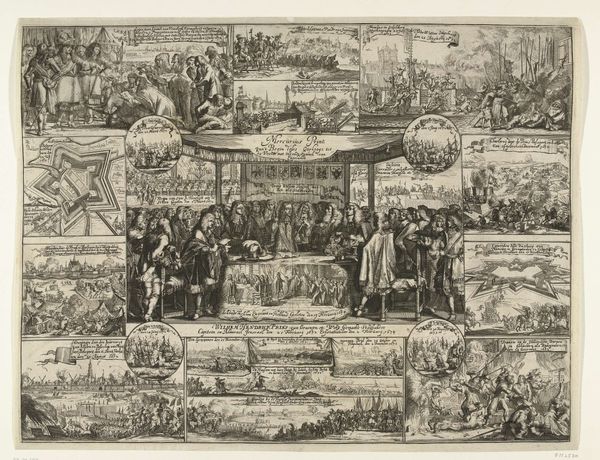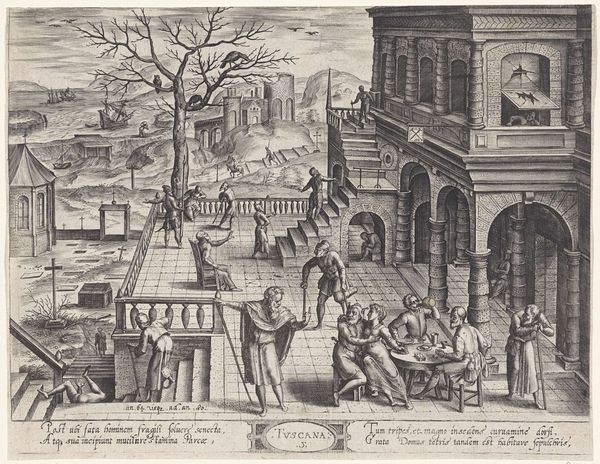
Copyright: CC0 1.0
Editor: Here we have Johann Theodor de Bry’s "Little Village Fair," an engraving from the late 16th or early 17th century. It depicts a bustling village scene, full of people. The composition is fascinating, with so much happening in every corner. How do you interpret this work? Curator: It's a window into early modern European social life, but also a commentary on power. Notice how the fair, ostensibly a communal celebration, is meticulously organized. Who benefits from this order? Who is excluded, and how does De Bry subtly reveal those exclusions? Editor: That's a great point! I hadn't considered the implications of the organization itself. Curator: Think about the role of the church and the tavern, focal points of the scene. How do they intersect with the lives of the villagers, and what social norms are being reinforced? Editor: I'm seeing it differently now, less as a simple celebration and more as a staged performance of community. Thanks for the insights!
Comments
No comments
Be the first to comment and join the conversation on the ultimate creative platform.
